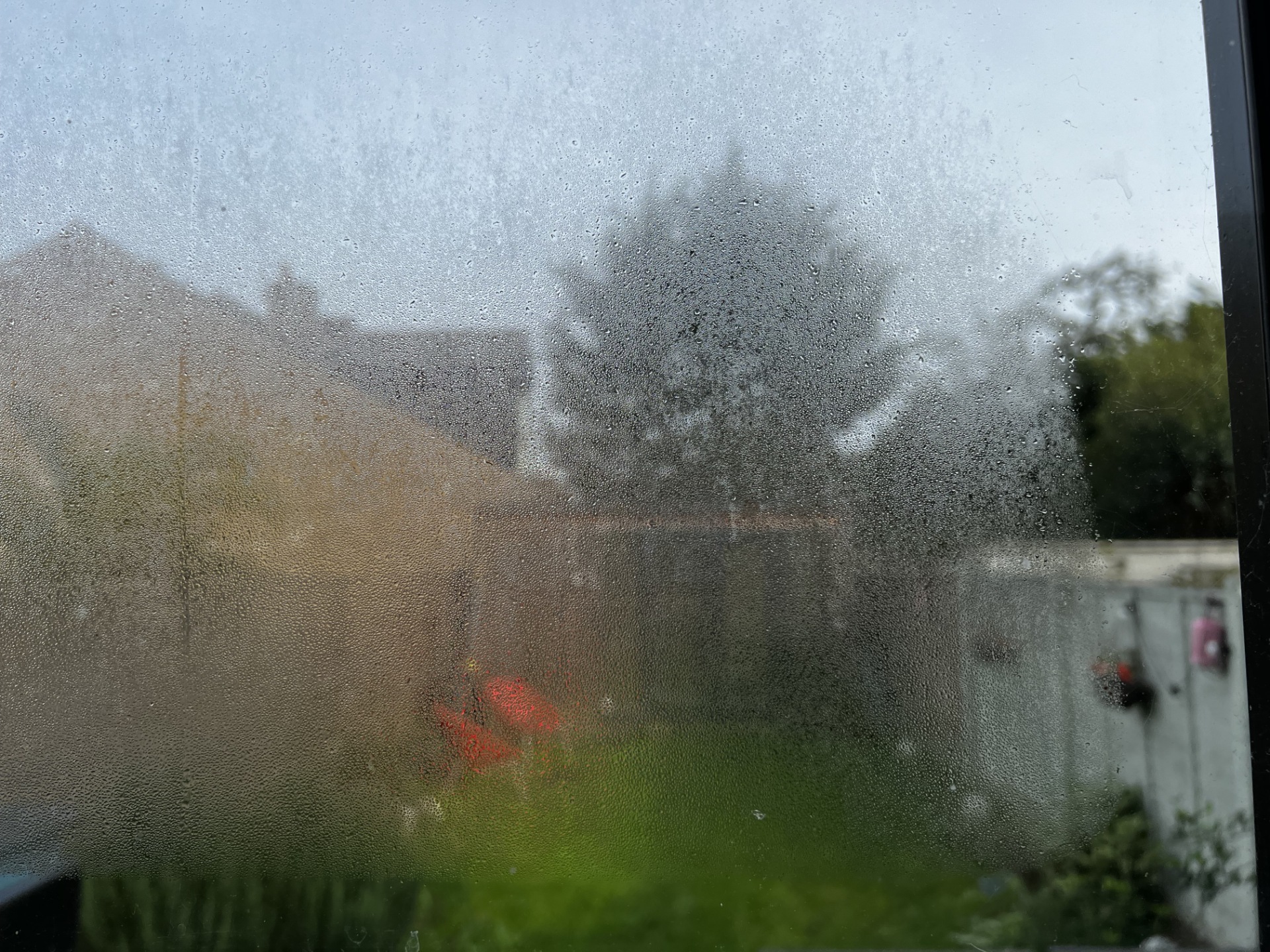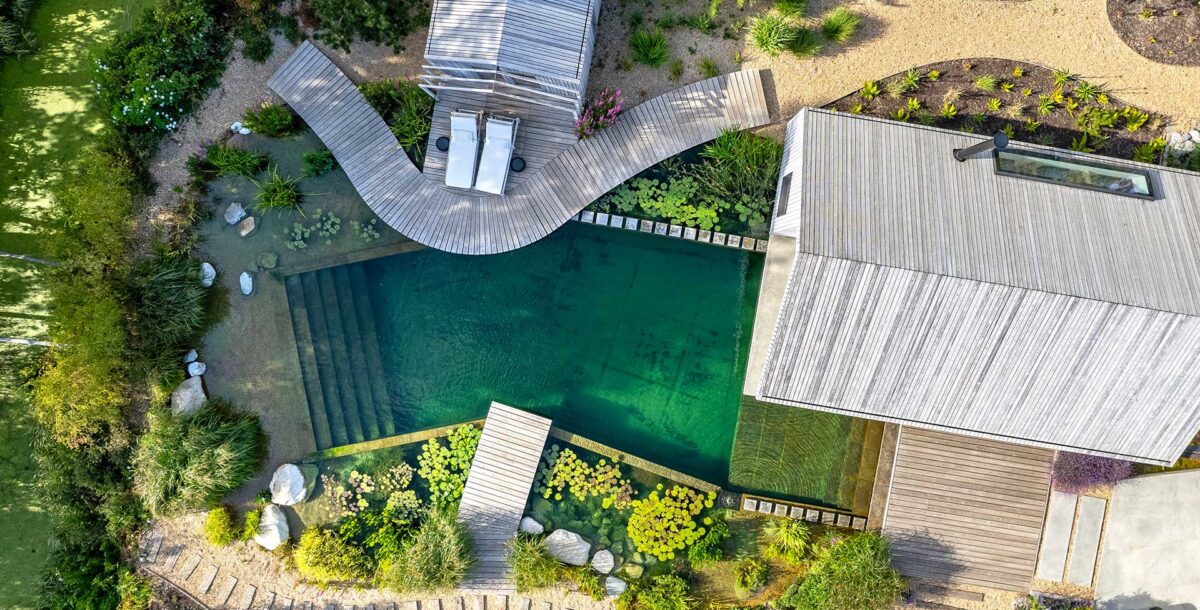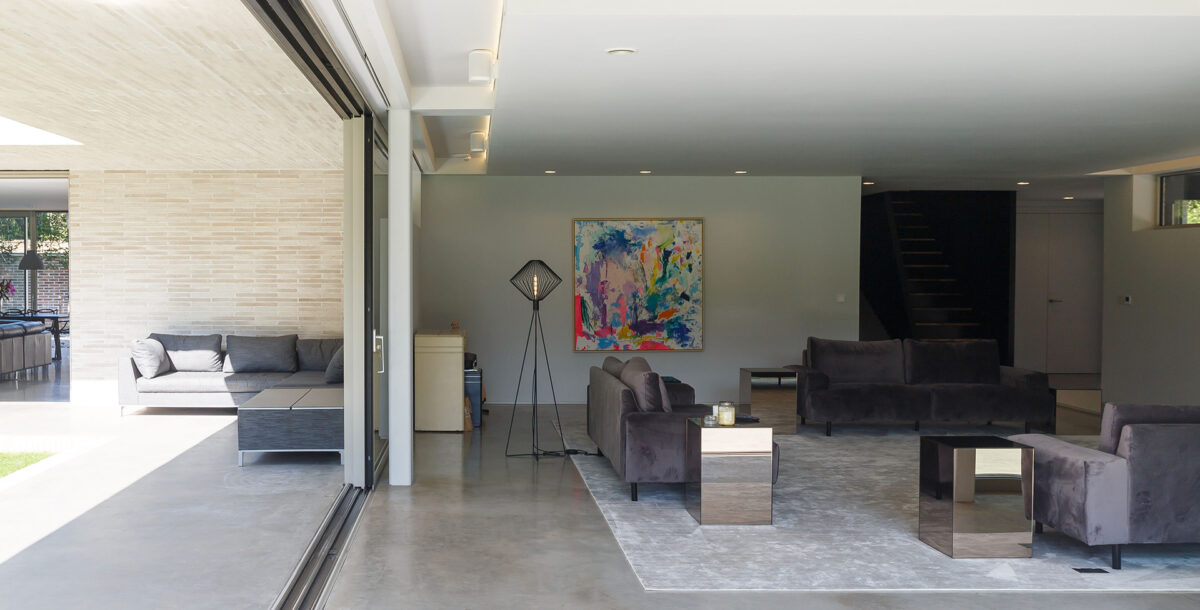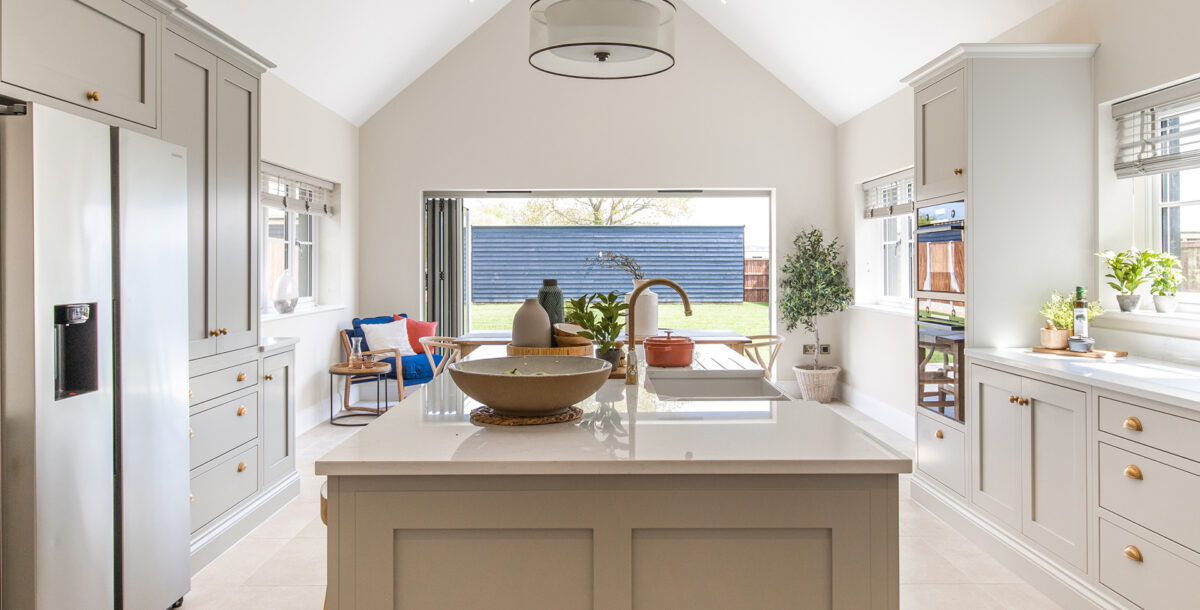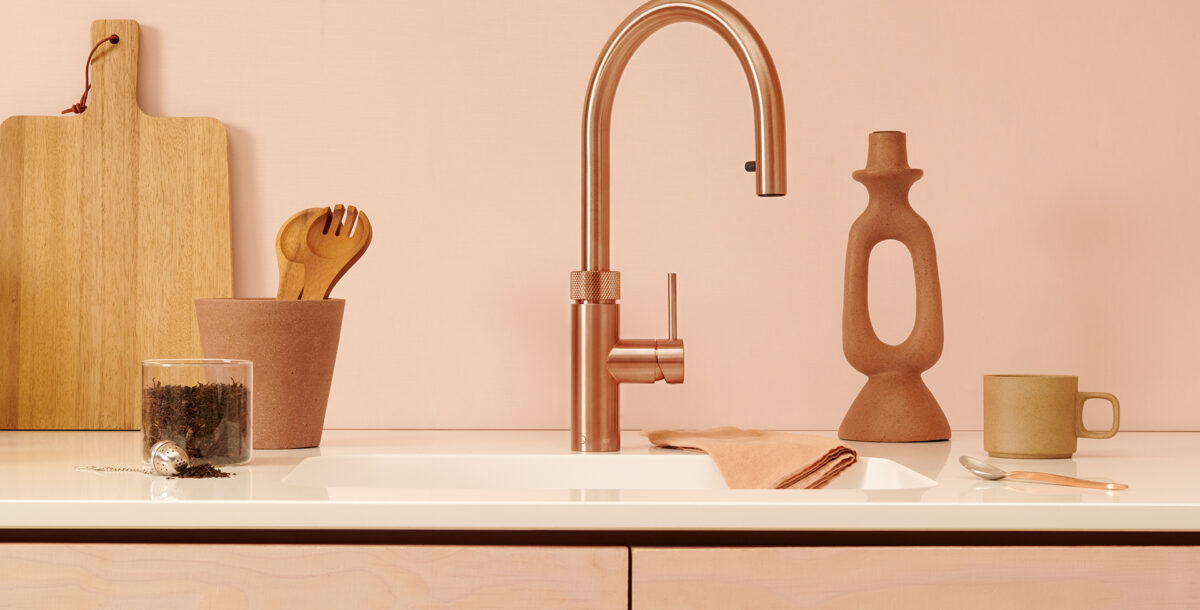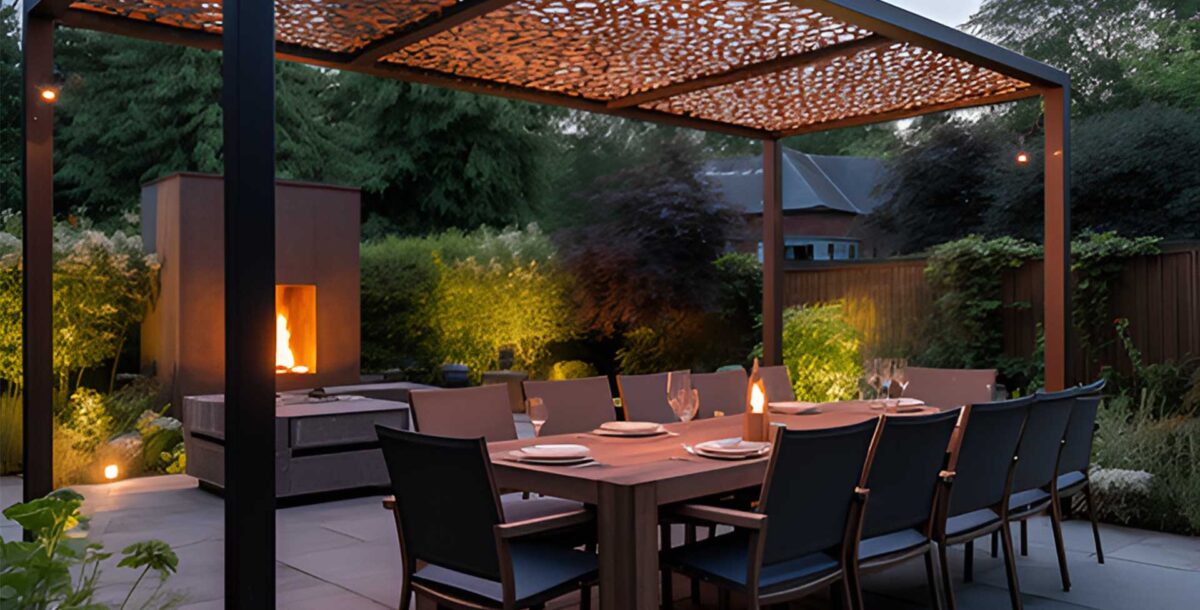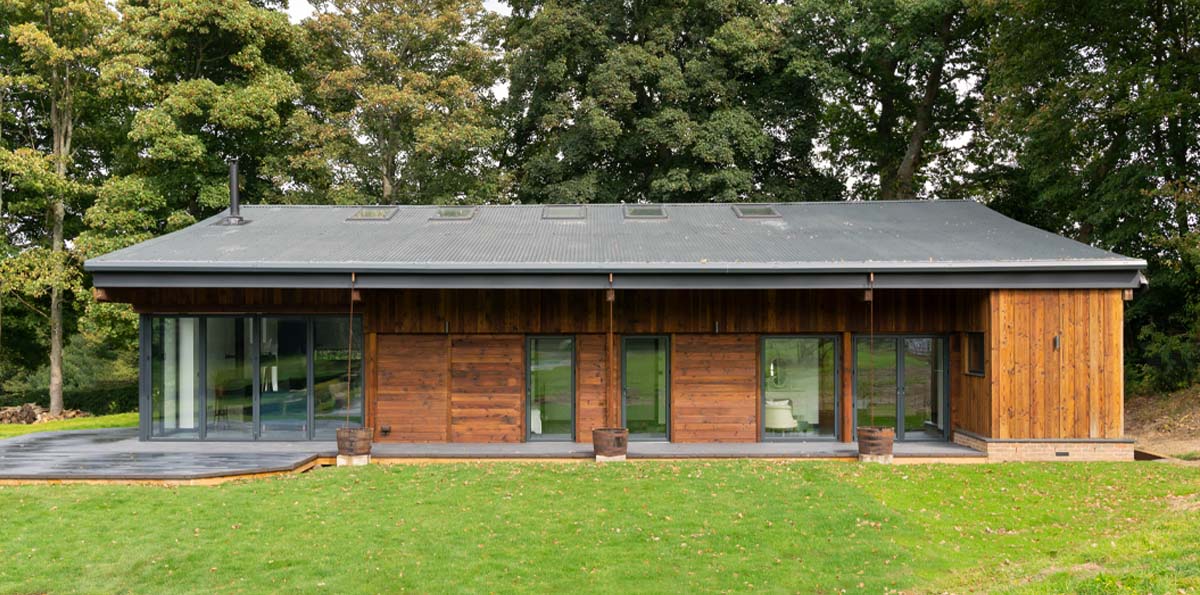How to stop condensation on windows and walls
Tired of water running down? Here’s what you need to know about stopping moisture from forming
Condensation is often the bane of many a household, with water often forming on windows, running down and creating problems, such as mould. It can also form on walls in severe cases. If you want to know how to stop condensation, you’re at the right place.
Condensation is not usually caused by serious issues and can affect any type of home. Even new builds can have condensation.
What causes condensation?
Condensation is simply caused by water vapour in the air turning back into water droplets (condensing). How and when this happens is based mainly on the temperature of your home, the relative humidity and the temperature of a surface that the air encounters.
First, it’s essential to understand that the hotter the temperature, the more moisture the air can hold. As the temperature drops (or a cold surface is encountered), the amount of moisture that air can hold is reduced, which can result in vapour turning back into droplets.
Next, it’s essential to understand about humidity. Our guide on the right humidity level for a home goes into more detail, but it’s worth explaining a bit here.
We usually talk about relative humidity (RH), which is the percentage of water in the air, measured against the maximum the air could hold at the current temperature. As temperature changes, so does humidity.
For example, in a home with 60% RH warmed to 21°C, if the temperature drops to 17°C after the heating is turned off, RH increases to 80%, which would be considered high humidity.
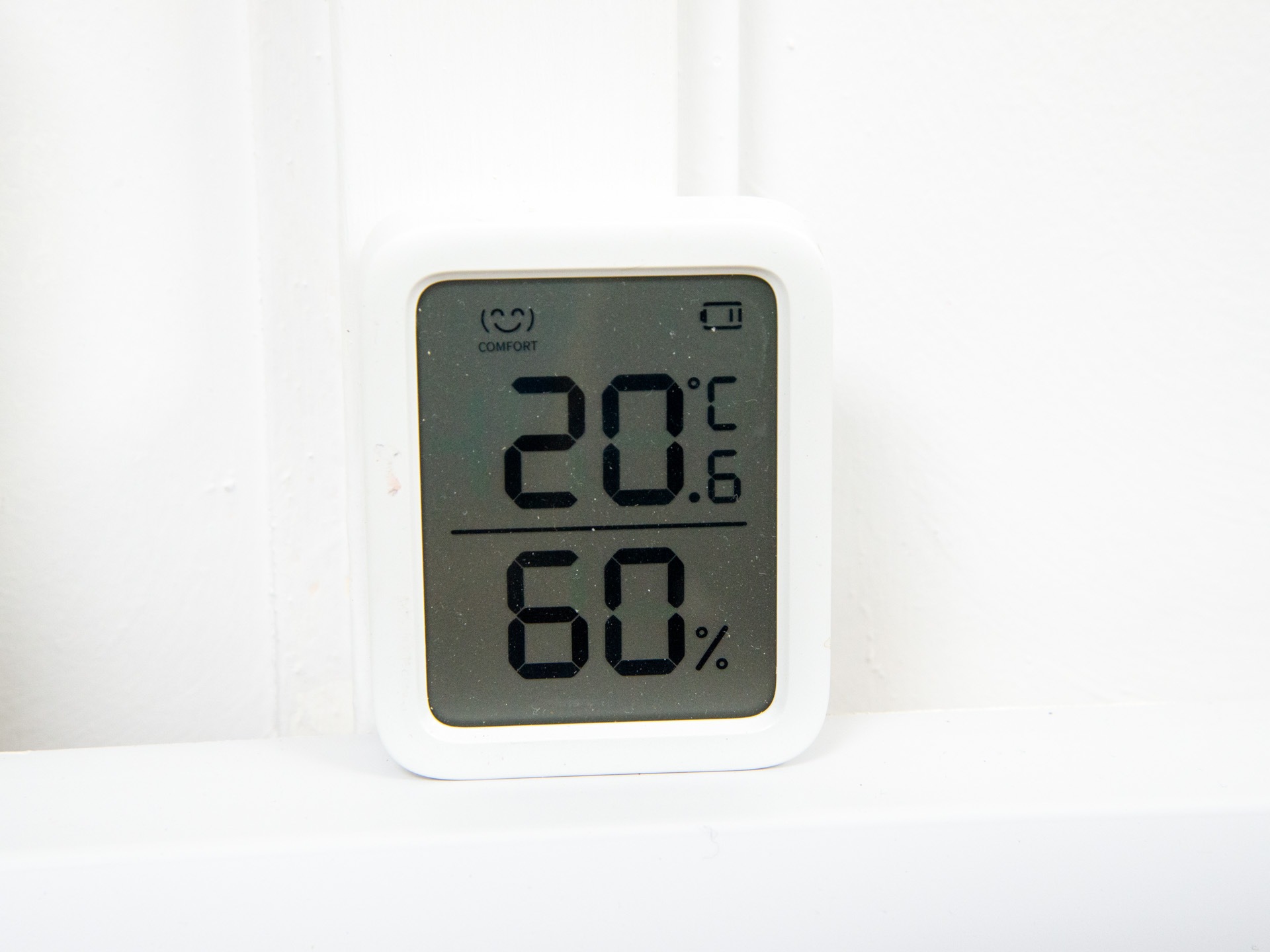
Next, the final piece of the puzzle is the dew point, which is the point at which air has to be cooled for relative humidity to hit 100%; at this point, the air can’t hold more moisture, so condensation occurs, with droplets forming.
Some guides will tell you that condensation is a sign of high humidity, but this isn’t strictly true. Condensation formation is a little more complicated than that and can be caused by high humidity, significant temperature variations or a combination of the two.
Take our example of 21°C temperature in a room with 60% RH (a normal level of humidity for any room). At this level, the dew point is just 12.9°C. If the temperature drops quickly overnight, this can cool windows rapidly below 12.9°C, allowing condensation to form on them.
You’re more likely to see the effects on single-glazed windows, as they allow the cold through; but get a big enough temperature drop, and you can see condensation on well-insulated double-glazed windows, although this is more unusual.
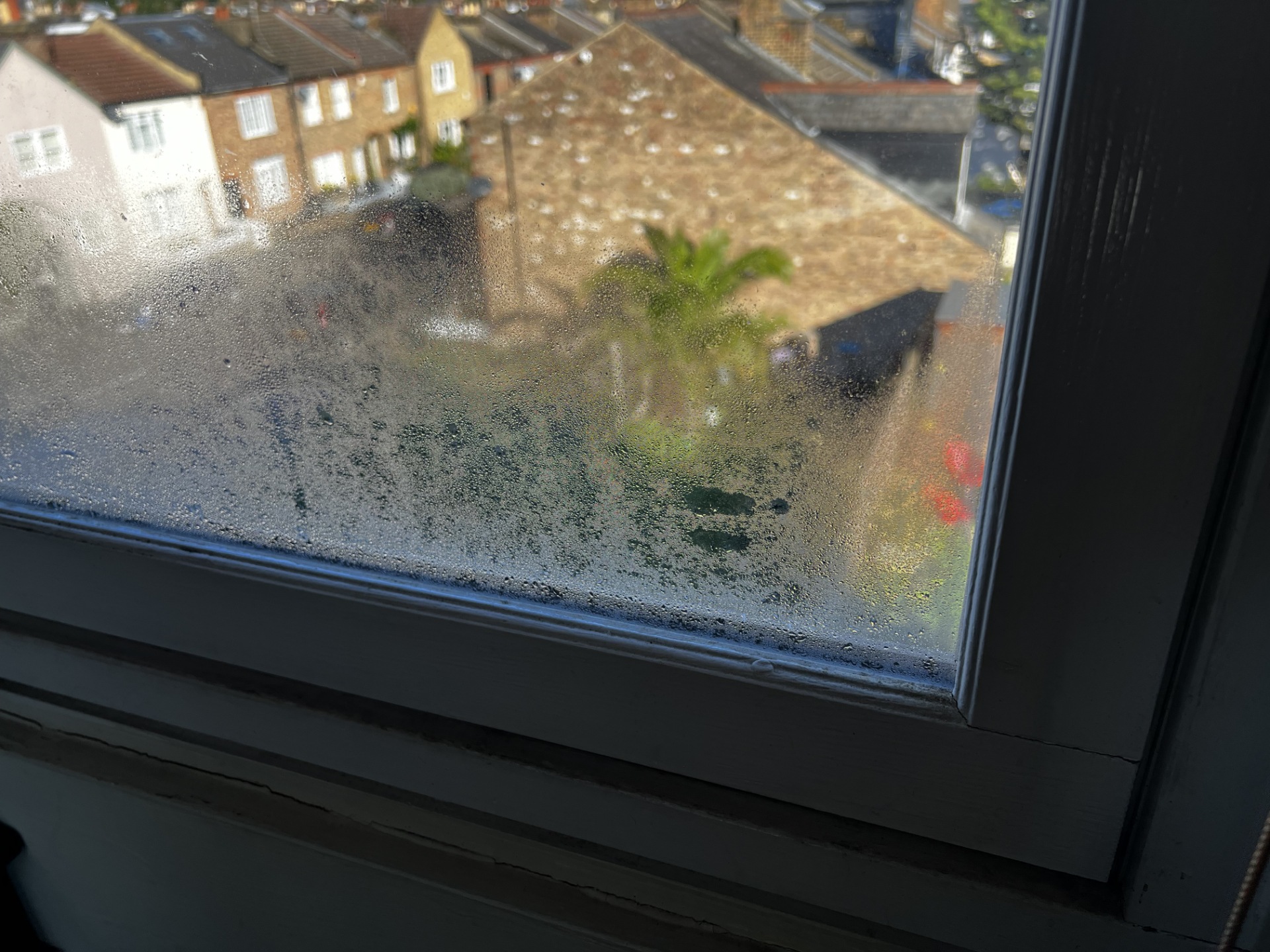
However, high humidity can cause problems, too. If our 21°C room was at 80% RH (a high level), the dew point is just 17.4C; turning the heating off could easily drop temperatures below that, causing condensation to form.
Condensation can also be formed by normal activity, such as showering or cooking with pans. In both examples, there’s additional heat that raises local air temperature, such as around the shower. As there’s additional water (either from the shower or a hot pan), water is evaporated and carried by air until it hits a cooler surface, such as a shower screen or mirror, and condenses.
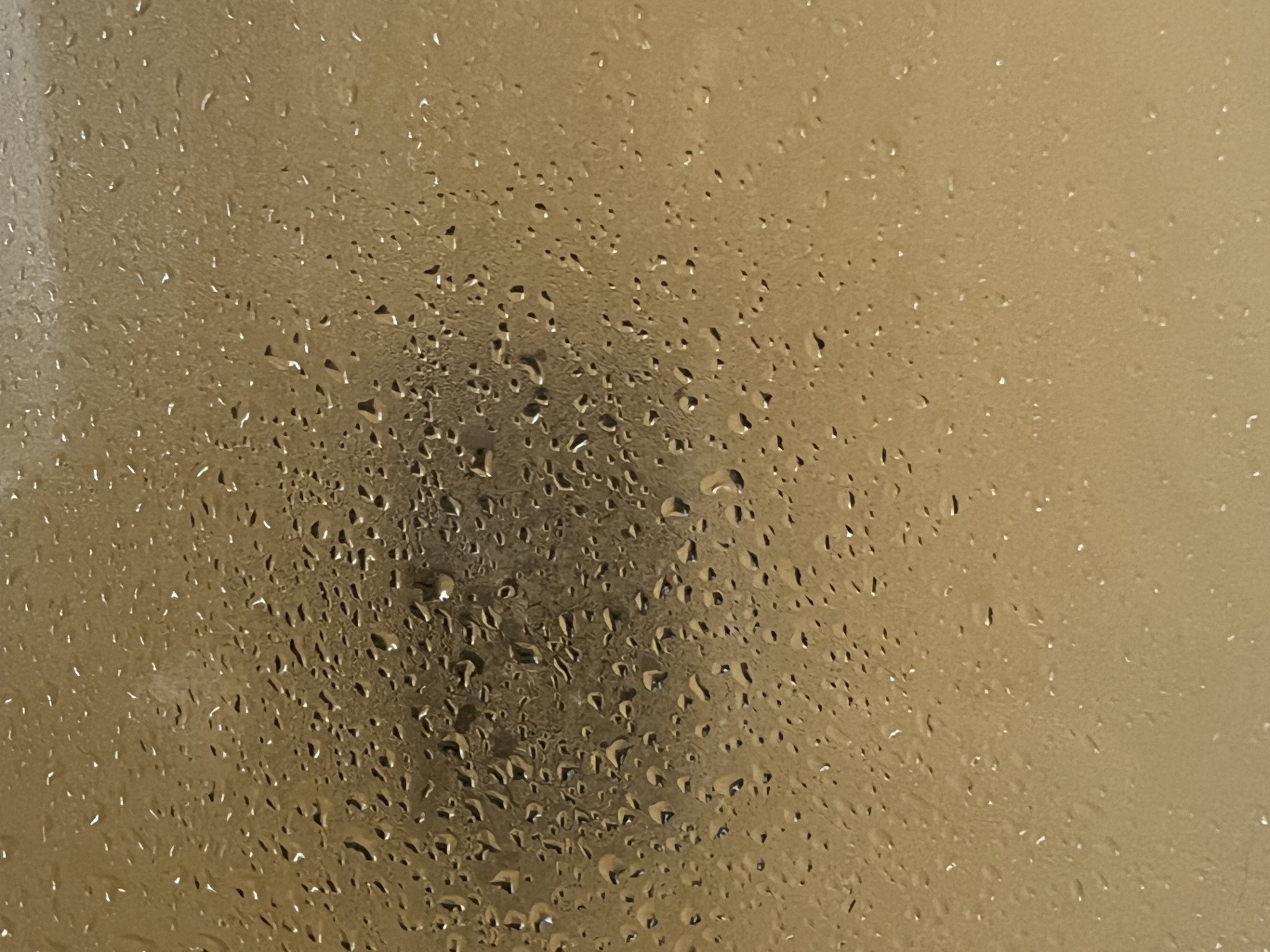
Should I worry about condensation inside?
Condensation can be a normal part of life in a house, particularly old and drafty houses with single glazing. How much condensation is a problem depends on where and how often it occurs.
If you have a well-insulated home, and only get the occasional bit of condensation when there are big swings in temperature, then this is normal life. If you get condensation more regularly than this, then your home is either too humid, or there are spots that are abnormally cold, allowing condensation to form. For example, a poorly-sealed double-glazed window may be letting in a cold draft that’s allowing condensation to form.
If you have single-glazed windows and notice condensation on the inside on cold days, then this is part and parcel of such properties. You should deal with the run-off and investigate other ways of reducing humidity.
If you have condensation on internal walls, then it’s likely that your home is not well insulated enough. As this kind of widespread condensation can lead to mould growth and damage to plaster work, you’ll need to take remedial action.
What about condensation outside?
On a cold day, you may notice that you have condensation forming on the outside of windows, even double-glazed ones. There’s not much that you can do about this. In fact, it’s a sign that your home is well insulated: the heat from inside is not warming the windows on the outside (it’s trapped inside, where you want it), so your cold external glass presents the ideal surface for condensation to form when moist air hits it.
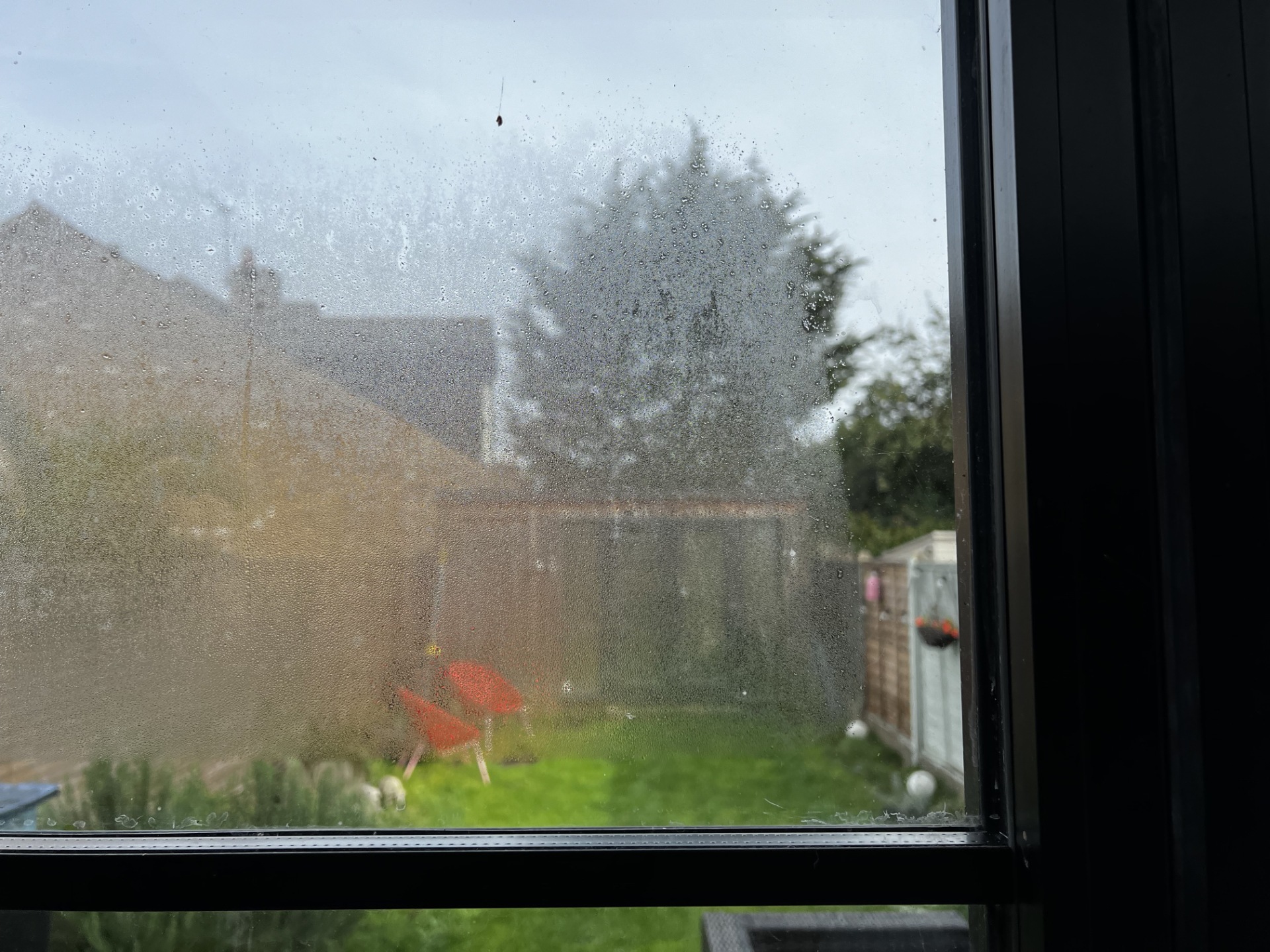
How do you stop condensation?
The first thing you should do with any internal condensation is remove it, whether this is on a shower screen, a wall or an internal window. Removing the moisture will prevent mould from growing, and it will also stop other issues, such as damp patches and rot. A dry microfibre cloth can be used, but if you’ve got big patches to deal with, try a window vacuum cleaner to suck the moisture off.
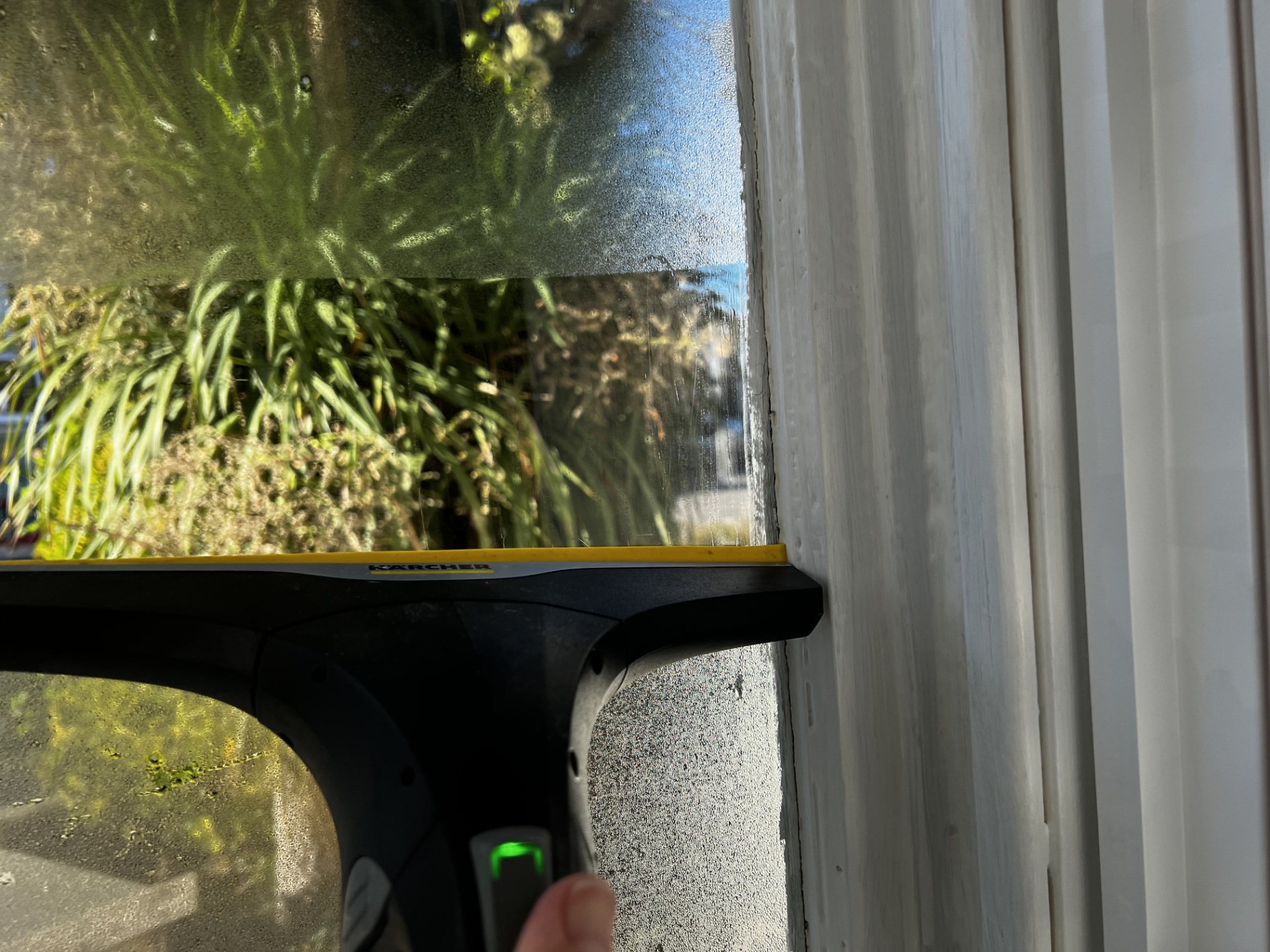
If you have mould growth, this should be dealt with appropriately. For areas of mould under 1m² that are caused by condensation, you can treat them safely with mould remover, although you should wear gloves, goggles and a mask. For larger areas or anything that you’re unsure about, you should call a specialist, as mould can be dangerous.
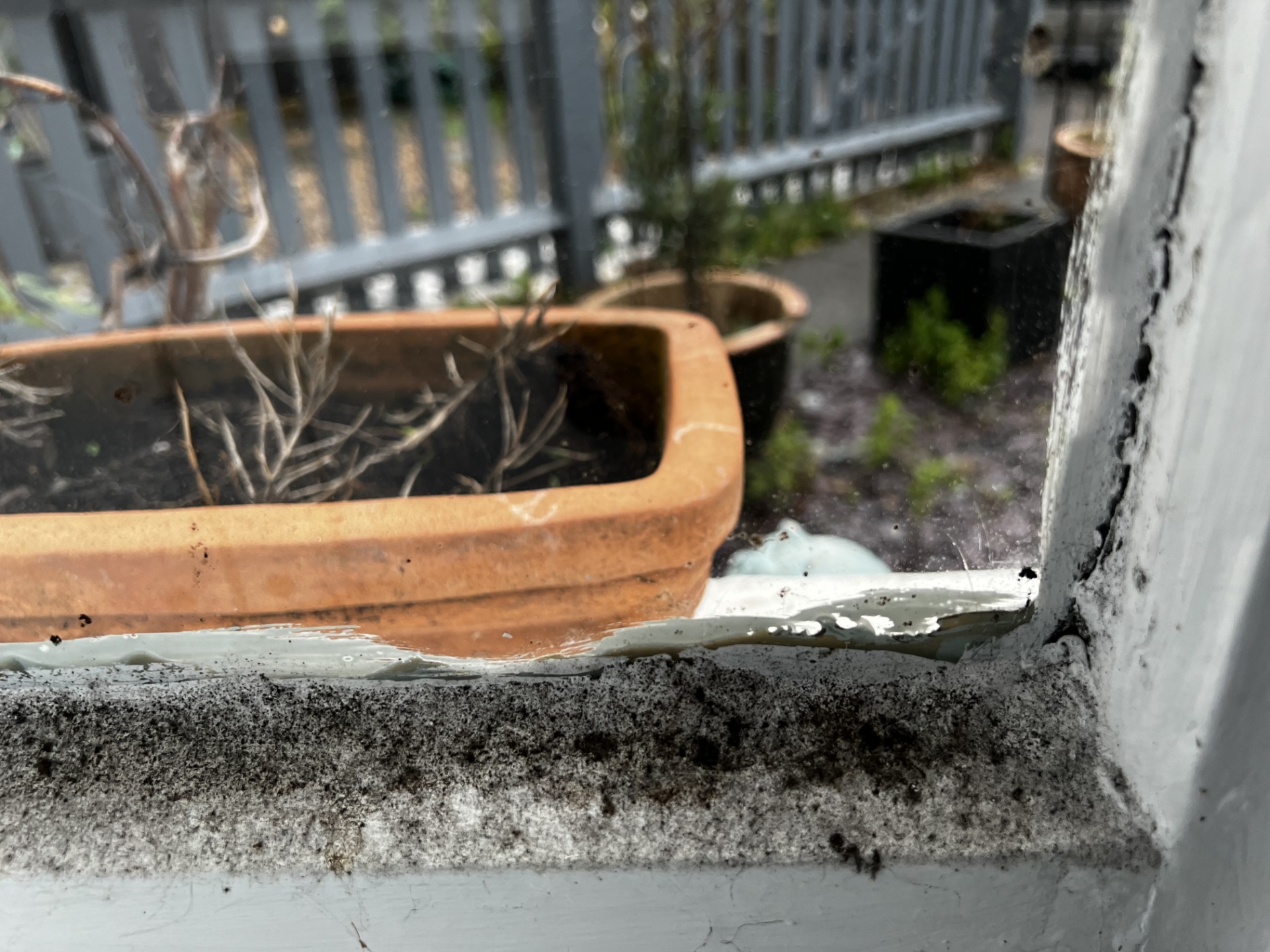
Preventing condensation from occurring means one of two things: controlling humidity and/or reducing cold surfaces. In our guide to the ideal humidity in a home, we explain how to control humidity levels, including ventilation (extractor fans and more advanced options, such as mechanical ventilation with heat recovery) and using a dehumidifier. Those tips apply to controlling condensation.
However, as we explained, condensation is caused when air hits a surface at or below the dew point. That can occur in homes where the relative humidity is fine, which tells us that there are other things to check.
First, your home should be kept at a minimum temperature of between 12°C and 14°C when it’s empty. This should, in most cases, keep temperatures above the point where condensation will form.
Next, insulation is important. Single-glazed windows are poor insulators, and condensation will form on them. Replacing them with double-glazed windows will reduce condensation.
For condensation forming on walls, insulation can help. Special liners can be used on walls, and there’s also anti-condensation paint that contains thermal insulators to reduce the problem of condensation.
Traditional insulation is also important. The type available will depend on your home’s construction, but the options include cavity wall insulation, external wall insulation and internal wall insulation, alongside loft and flat roof installation. You may be able to get help with insulation via the Great British Insulation Scheme.

